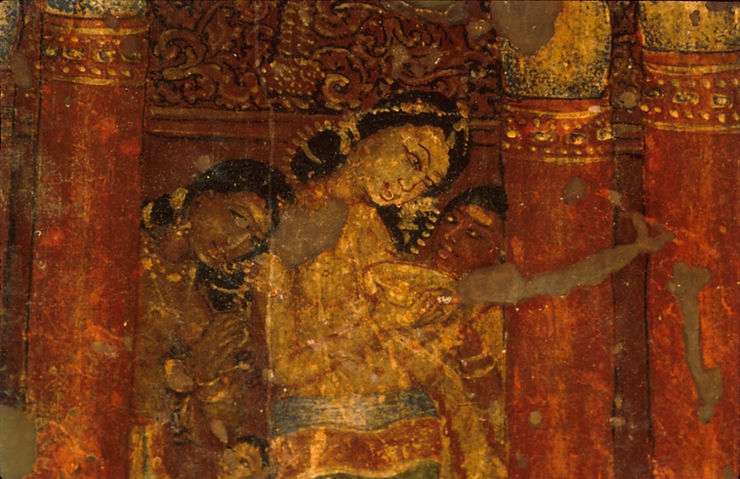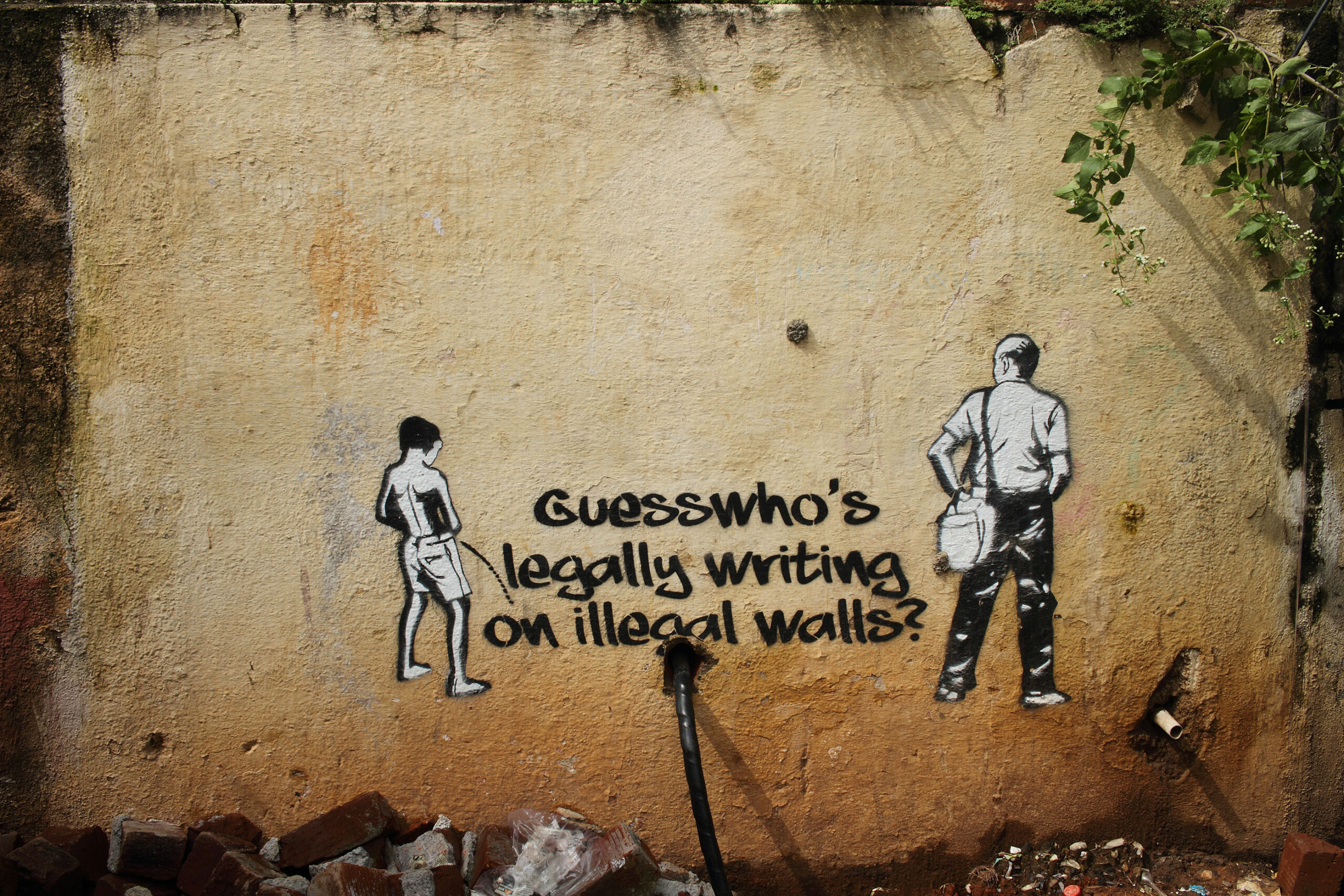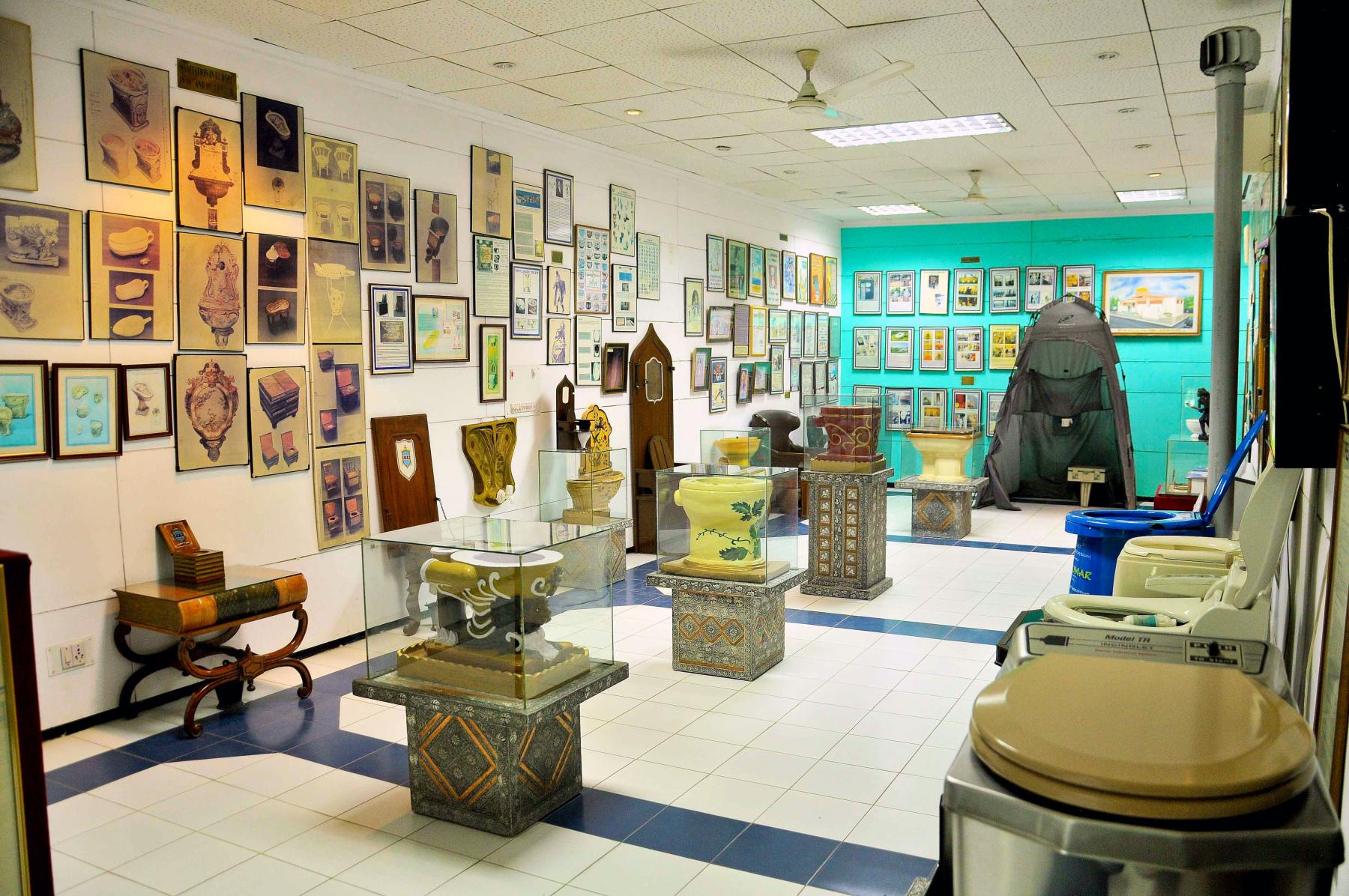The divine origin of painting is narrated in the Mahabharata, which speaks about Nara and Narayana who were meditating in penance in the Badari grove. Indra chose this moment to send a group of celestial damsels to disturb their asceticism. Undaunted, Narayana took a fresh mango leaf and, with its juice on its thigh, sketched a beautiful form of a nymph. This sketch gave birth to Urvashi, whose superior grace and perfection put to shame all the damsels. Later Narayana passed the skill on to Visvakarma, who spread the knowledge in the world. This is how art is said to have been passed on from the deities to the upcoming generation of humans.

It is difficult to recount the exact time period or process when art making was initiated in early India due to the lack of historical evidence. Bhimbetka rock paintings are assumed to be the earliest traces found in India that substantiate the presence of desire in humans to visually document their life. This practice unfolded impeccably during the Mauryan Empire, the Shunga dynasty, the Satvahahanas, who had commissioned the first phase of Ajanta murals, and the empires that succeeded them in the years to come.
These timeless works of art sparks a curiosity about the process of art making and the creative journey of the artists who had spent monumental time and effort to execute these masterpieces. However, there are limited texts that provide detailed accounts of the early Indian artists or their practice and way of life.
Here are some of those texts containing scattered narratives, for us to peek into the lives of Indian artists in the ancient and the medieval era, how they painted and whom they painted for.
The Norms of Painting as per the Scriptures

Vishnudharmottara Purana, an appendix from the Vishnupurana, is the earliest text that solely delineates the process of painting and the etiquettes to be followed by an artist. Bharata’s Natyashashtra too contains a few chapters on the usage of colors and the emotions to be portrayed in a painting.
Artists were supposed to religiously adhere to a set of rules before painting. Before painting, they had to wear immaculate apparel, set up their equipment and face east, light incense, salute the holy ones and then start their painting. The texts contained further directions on how to paint certain subjects, the methodologies, ethics and the errors to be avoided while painting them.
The rituals belonged to a holistic lifestyle that was followed by the majority of the population, irrespective of their profession. And art was considered a vocation rather than solely a source of livelihood.
Art in Polite Education

Fine arts held a significant position in the education system that was imparted to the royal members of a family. Painting was taught to pupils irrespective of their probable future profession. It was considered mandatory for princes and princesses to be well-equipped in painting, sculpture, papercuts, calligraphy and more. The study of art was part of the polite education of the day and there was a large appreciative audience to judge the worth of works of art by the young members of the royal family.
As mentioned in the Kathasaritasagara, Naravahanadatta, the sole heir to the throne, played the veena and was an expert at archery while also being skilled at painting and sculpture.
In another instance, Avantisundari and her companions amused themselves with practice of the more difficult aspects of painting, sculpting, papercuts, calligraphy, music, song and play of musical instruments.
The Kamasutra by Vatsyana states that a gentleman of taste could be determined by his inner apartment in his home. His inner apartment should have a veena suspended from a peg, a painting board, a box full of colours and brushes, and a book of literary value. In the socio-cultural circumstances of early India, the skills an individual was able to master determined his/her personality, popularity and acceptability in case of marital alliance.

In his texts, Kautilya had laid an emphasis on the part of the state to support established silpins imparting their knowledge to pupils. These professionals had acquired proficiency in different branches of the fine arts as a mark of their accomplishment. This practice enhanced the prestige of the state through the growing renown of such professionals.
Segregations within the Artist Community

There existed a certain hierarchy among artists with regard to their gender or social background and the subjects they were allowed to paint.
Women, who were also called silpini, excelled at fine line drawing, or so it was stated. The Chitrasutra gives special importance to delicacy in line drawing. And a popular notion that women would be experts at the finer aspects of art was stated in the texts. Hence, female artists were not allowed or taught to paint more complex paintings. And women were too bashful and reserved to project their skills or themselves.

An instance from the Viddhasalabhanjika narrates the expertise of the daughter-in-law of a famous Chandella sculptor, Satana. She could carve a sculpture of Simhananda better than her husband Chitnaka. However, she would describe herself as the vadhu of Satana, rather than highlight her sculptor identity.
Certain scenarios like hunting campaigns, battle narratives and court scenes were to be painted solely by male painters. Whereas painting of seasons like spring, portraits of princesses, alpana, and kolam were reserved for female painters.
It was believed that the relationship between the artist and the artwork or sculpture was fundamental to the accurate portrayal of the subject. The belief that the artwork resembles the personality of the artist has been assumed as the reason behind this custom of segregating painters.
There were two sections of dilettantish artists who were detested in the art society of the times.
One was the section of Dindins who were mainly associated with vandalism. They destroyed the fine banners and murals, and disfigured patches of walls with sharp instruments.
The other section consisted of the mere dabblers in art. They lacked a practical knowledge of painting and, instead, they paraded a pretense of being experts at almost every section of fine art. They were not professionals and contributed almost nothing to the visual beauty of a nagara or city. They had become the point of ridicule in society. An instance from the Kuttanimata cites the example of this sort of artist i.s. Bhattaputra. As described by another Damodaragupta, Bhattaputra carried around paper cut scissors and brandished them in assemblies or at royal courts, but was a complete failure at any kind of applied art. They have been referred to as pseudo-artists by modern art historians. These sort of divisions have later led to the demarcations of high art and low art in the medieval and modern phases of Indian Art.
Aesthetics and Educational: The Purpose of Art in Society

Art was not without its purpose, which was again multifaceted. Paintings performed several functions in society other than adding to the enhancement of artistic expression and visual culture of the then society. The objectives behind creating murals and sculpture in private, palaces and community spaces varied according to their visual content.
The sculpted panels at Bharhut and Sanchi were made to evoke faith and ardour for good deeds and conduct. The Vishnudharmottara stated that homes should only contain paintings that depicted moods of love, peace and faith. Battle scenes, sorrowful situations were considered inauspicious themes and were forbidden.
The other crucial role of art was the portraiture of royal princes and princesses which were sent across kingdoms for marital alliances. Marriages in royal and elite families were arranged by the exchange of paintings specially prepared by painters. Portrait artists were classified separately and were solely commissioned for portraits. Their social standing differed from that of the other kinds of artists due to the fact that they spent a significant amount of time with the members of the royal family.
A marital alliance depended primarily on the portrayal of a prince or princess and on the messengers who carried the portraits across distant cities and countries.

Art Appreciation Back Then

The standards of art appreciation and criticism were laid down principally by the Chitrasutra and the Vishnudharmottara Purana. The elements that contributed towards the beauty of a picture included the delicacy of line, symmetry, suitable background, color balancing. The proprietary of colour and form according to the subject chosen for delineation was based on the notion that goodness and beauty went together.
Artists were reputed and cherished by the society. The personality of the painter was so felt in the society that literature has been enriched by a number of parables surrounding their lives. The sculptor and painter were greatly valued by the king for their proficiency in their respective field of fine art. A sculptor could be a painter, a metal craftsman, an ivory carver and a scribe of the highest order.
Artists who were of old age and of exceptional ability were entertained in royal courts to execute royal commissions, to judge the standards of pictures brought and also to teach painting to the members of the ruler’s family. An example to the point is the prince Harivahana looking at a picture of a princess as he is surrounded by several masters of painting accomplished in the art and other connoisseurs proficient in its theory and technique, trying to understand the real import of beauty in it.
Art and its Audience

Visual arts and performing arts in the early period was considered to be a social responsibility on the part of artists and performers. They were at the service of the citizens to enhance and spread beauty, joy and the magnificence of the cultural aspects of a state. The concept of gallery and auditoriums entered the art scene much later, when arts became a commercial sector.
There were no restrictions involved in the aspect of viewing a work of art for the common people. To make the visual arts accessible to the public, temples and caves were covered with decorative paintings, sculptures and murals.
Art, then, was kept inclusive in respect to its audience since visual narratives was the simplest method of propagating state ideals, knowledge from religious texts and lessons on moral code and conduct.
Art speaks much about the subtle attributes of a region or a state Though these textual narratives portray the gender bias, rigid structures and the social hierarchy layered within ancient Indian art, it is difficult to overlook the impeccability in these works of art.
So while you are here marveling at these ancient artworks and their makers, read to know more about the socio-cultural roots of Indian art and the change it has undergone since the post-independence era, here.
Bibliography
Sivaramamurti, C. The Painter in Ancient India. 2nd Edition ed., New Delhi, Abhinav Publications, 1978.




